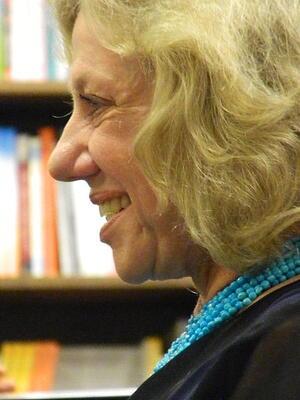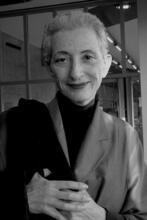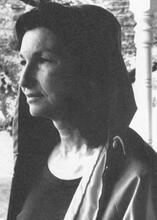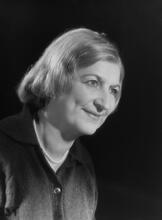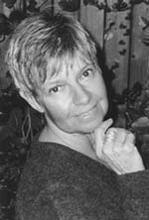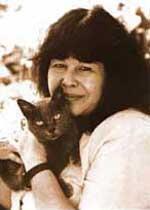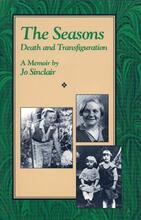Erica Jong
Erica Jong at an event in 2013. Photo courtesy of Wes Washington via Wikimedia Commons.
Erica Jong is an American writer most famous for her bestselling novel Fear of Flying (1973). Born and raised in New York City and educated at Barnard and Columbia, Jong published two volumes of poetry before the success of Fear of Flying transformed her into an international celebrity. Since then, she has published novels, poetry collections, memoirs, works of literary criticism, and anthologies, most often focusing on the explicit expression of women’s sexuality and neglected or untold stories of contemporary and historical women. Raised in a Jewish family and often identified as Jewish in reviews and profiles throughout her career, she has noted that she was “assimilated, mostly ignorant of [her] roots, and ignorant of the preciousness of [her Jewish] identity” until the 1980s, when she began to explore her roots in her novels.
Family and Education
Erica Jong was born on March 26, 1942, in New York City, the second of three daughters in an artistically inclined Jewish family. Her father, Seymour Mann, had been a professional musician as a young man, publishing songs and performing as a percussionist on Broadway in Cole Porter’s Jubilee (1935), in which he performed in the band that debuted “Begin the Beguine.” Jong’s mother, Eda Mirsky Mann, was a visual artist, born in London to a Russian Jewish immigrant family. Jong’s parents started a successful business together, designing and marketing porcelain objects, including Blue Danube dinnerware and Seymour Mann dolls. Jong had a comfortable childhood on the Upper West Side, where the family home was run by her grandmother and a maid from Jamaica. There she learned to paint beside her immigrant grandfather in his studio while he sang Russian folk ballads and Red Army songs (though he would “rage and chase [her] down the stairs” if she “failed to take [her] painting seriously enough”) (Jong, Fear of Fifty). Her father always supported her desire to write, reminding her that all she needed was a pencil and a blank piece of paper to pursue her vocation.
In the early 1960s, Jong attended Barnard College, where she took writing workshops with the poet Robert Pack, earned election to Phi Beta Kappa, and edited a literary magazine. After graduating in 1963, she received a Woodrow Wilson fellowship to pursue a Master’s degree in English literature at Columbia, where she specialized in eighteenth-century British literature and wrote a thesis on “The Theme of Women in the Poetry of Pope.” While in graduate school she married Michael Werthman, who worked for the publisher Prentice-Hall. After he suffered what Jong called a breakdown and was hospitalized, she had her marriage annulled and soon married Allan Jong, a Chinese-American psychiatrist. She describes him as “handsome, sexy, nonverbal,” and “the antidote to Michael’s craziness” (Fear of Fifty). The couple lived in Heidelberg, Germany during his military service from 1966 to 1969; they divorce in 1975.
Early Poetry
During this period, Jong discovered the work of Sylvia Plath and Anne Sexton, began to publish poems in literary journals and anthologies, and drafted an unpublished novel, “a Nabokovian pastiche” called The Man Who Murdered Poets.
Jong’s first book, a collection of poetry, Fruits & Vegetables, was published in 1971, and that year she won Poetry magazine’s Bess Hopkins Prize. Several of her early poems (such as “Seminar,” “Books,” and “A Reading”) treated, satirically or reverently, the poetic demimonde Jong had been inhabiting. One especially striking poem of this era, “The Commandments,” riffs entertainingly, and transgressively, on the gendered dynamics of that community, offering up endings to the line “If a woman wants to be a poet,” including “she should not write odes to her abortions” and “she should not masturbate in writing seminars.”
Fear of Flying
Jong has often described how Aaron Asher, the editor at Holt, Rinehart and Winston who published her first poetry collection, encouraged her to write a novel in the voice of her poems. The result was Fear of Flying, in which Jong fictionalized her childhood and early adulthood, telling the story of a woman named Isadora Wing, her sexual desires and adventures, and her literary aspirations. Asher bought the novel for a modest advance, but the editor Elaine Koster, while negotiating to purchase the paperback rights for New American Library, recognized the book’s commercial potential. Thanks to her intervention, the novel had a very substantial first printing, many galleys were circulated, and the book generated a noisy prepublication buzz.
The novel’s initial reviews were mixed in the fall of 1973. However, enthusiastic reviews from John Updike in the New Yorker and Henry Miller in The New York Times helped to propel the novel onto hardcover bestseller lists. Word-of-mouth continued to build sales, and a paperback edition published in November 1974 reached the #1 spot on The New York Times’ bestseller list for mass-market paperbacks in January 1975. Her book went on to sell, according to Jong, more than ten million copies.
The explicitness with which Fear of Flying detailed Isadora’s social and sexual experiences accounted for much of its commercial success and held great appeal for readers of other major bestsellers of the late 1960s, including Updike’s Couples and Philip Roth’s Portnoy’s Complaint. Opining on marriage, the fictional Isadora muses, “Even if you loved your husband, there came that inevitable year when fucking him turned as bland as Velveeta cheese … and you longed for an overripe Camembert.” On the false, pernicious promises of American mass culture, she reflects, “What all the ads and whoreoscopes seemed to imply was that if only you were narcissistic enough, if only you took proper care of your smells, your hair, your boobs, your eyelashes, your armpits, your crotch, your stars, your scars, and your choice of Scotch in bars—you would meet a beautiful, powerful, potent, and rich man who would satisfy every longing, fill every hole, make your heart skip a beat … and fly you to the moon.” Famously, Isadora fantasizes about a “Zipless Fuck,” an anonymous, romantic sexual interaction free of obligation or remorse, and that phrase soon functioned as a metonym for the novel (covers of later editions have almost always featured zippers).
Jong’s work was subject to critical attacks by misogynistic critics but received supportive reviews by feminists, all of whom saw the novel as an icon of second-wave feminism. When Jong embraced a new role as a media personality, accepting invitations to appear on television and to contribute to commercial magazines, it boosted attention and book sales but also prompted many literary critics to take her less seriously as a writer.
Subsequent Works: Poetry, Fiction, and Memoir
Nonetheless, Jong continued to write and publish during the ensuing decades, releasing poetry collections on a regular basis, including At the Edge of the Body (1979), Ordinary Miracles (1983), and a volume of new and selected verse, Becoming Light (1991). These poems are noticeably less formal, and more casually expressive, than her early poetry.
Jong’s fiction mined two major veins. On the one hand, How to Save Your Own Life, Parachutes and Kisses (1984), Any Woman’s Blues (1990), and Fear of Dying (2015) either continue the story of Isadora Wing or focus on similarly semi-autobiographical protagonists who reflect on the experience of being female in the contemporary United States. Critics too often assumed that these novels were thinly veiled autobiographies, and Jong did not help matters by remarking that “all autobiography is fiction and all fiction is autobiography.”
The other vein includes Fanny (1980), Serenissima, later retitled Shylock’s Daughter (1987), and Sappho’s Leap (2003). These novels reflect Jong’s fascination with literary history. Following a postmodern feminist literary practice, they rewrite the plots of canonical literary works from female perspectives and offer fictional accounts of the lives of historical women.
Though she was raised in a Jewish family, and often has been identified as Jewish in reviews and profiles throughout her career, Jong has noted that she was “assimilated, mostly ignorant of [her] roots, and ignorant of the preciousness of [her Jewish] identity” until the 1980s, when she began to engage with them more seriously and explored them in her novels (Introduction to Shylock’s Daughter). Particularly noteworthy in this regard is Inventing Memory (1997), which chronicles four generations of American Jewish women using the self-conscious frame of a contemporary scholar at a Jewish research institute searching out her foremothers’ stories. In all of her novels, Jong mixes conventions of both mass market and literary fiction, including heavy reliance on clichés, sensationalism, and graphic sexuality, on the one hand, and erudite quotations and thorough historical research.
Jong’s personal life remained a large part of her public persona, thanks to her media appearances and to her revealing and at times confessional autobiographical essays and books. In her memoir Seducing the Demon (2006), for example, she describes both her sexual tryst with Martha Stewart’s husband and her struggles with substance abuse and recovery. With her third husband, Jonathan Fast (son of best-selling American writer Howard Fast), whom she married in 1977, she had a daughter, Molly Jong-Fast, for and with whom Jong wrote a pseudo-children’s book—Megan’s Book of Divorce, later titled Megan’s Two Houses (1984)—and who herself began publishing as a novelist and memoirist in the 2000s. Jong’s current husband, lawyer Kenneth Burrows, whom she married in 1989, helped her to connect more deeply with her Yiddishkeit, or Jewish identity, which inspired much of her later work.
Jong’s Legacy
Jong continues to publish books and articles, and her legacy as a writer remains complex. That her celebrity status often overshadows the seriousness of her writing leaps out from her book covers, where her name appears in a much larger font than the title. This arrangement, typical for celebrity authors, reflects publishers’ belief that it is Jong’s persona, and not the subject matter of any particular book, that captures readers’ attention.
Yet Jong’s best writing deserves, and rewards, careful reevaluation. Reading Fear of Flying in the light of the #MeToo movement, for example, reveals that the “Zipless Fuck” was more than a naïve fantasy of feminist sexual liberation. Rather, it was Jong’s demonstration of the way that the threat of sexual assault by men serves as a check on sex’s liberatory potential for women. Isadora, at the end of the novel, makes this point explicit: “Here I’d been offered my very own fantasy … and instead of turning me on it had revolted me.” Similarly, Jong’s other novels, poetry, and much of her nonfiction deserve to be revisited and reconsidered for their forthright accounts and valuable insights about women’s experiences.
Selected Works Erica Jong:
Fruits & Vegetables. New York: Holt, Rinehart & Winston, 1971.
Half-Lives. New York: Holt, Rinehart & Winston, 1973
Fear of Flying. New York: Holt, Rinehart & Winston, 1973.
Here Comes & Other Poems. New York: New American Library, 1975.
Loveroot. New York: Holt, Rinehart & Winston, 1975; London: Secker & Warburg, 1977.
The Poetry of Erica Jong, 3 vols. New York: Holt, Rinehart & Winston, 1976.
How to Save Your Own Life. New York: Holt, Rinehart & Winston, 1977.
At the Edge of the Body. New York: Holt, Rinehart & Winston, 1979.
Fanny: Being the True History of the Adventures of Fanny Hackabout-Jones. New York: New American Library, 1980.
Witches. New York: Abrams, 1981.
Ordinary Miracles. New York: New American Library, 1983.
Megan's Book of Divorce. New York: New American Library, 1984.
Parachutes & Kisses. New York: New American Library, 1984.
Serenissima: A Novel of Venice. Boston: Houghton Mifflin, 1987. Republished as Shylock’s Daughter. New York: HarperPaperbacks, 1995.
Any Woman's Blues. New York: Harper & Row, 1990.
Becoming Light: Poems, New and Selected. New York: HarperCollins, 1991.
The Devil at Large: Erica Jong on Henry Miller. New York: Random House, 1993.
Fear of Fifty: A Midlife Memoir. New York: HarperCollins, 1994.
Inventing Memory. New York: HarperCollins, 1997.
Sappho's Leap. New York: W. W. Norton, 2004.
Seducing the Demon: writing for my life. New York: Jeremy P. Tarcher, 2006.
Love Comes First. New York: Jeremy P. Tarcher, 2009.
[editor] Sugar in My Bowl: Real Women Write About Real Sex. New York: Ecco, 2012.
Fear of Dying, New York: St. Martin’s Griffin, 2016.
Aubry, Timothy. “Erica Jong’s Textual Bulimia: Fear of Flying and the Politics of Middlebrow Consumption.” Journal of Popular Culture 42, no. 3 (June 6, 2009): 419–41.
Belzer, Tobin. “Written in and Read Out: Why Erica Jong’s Fear of Flying Was Not Considered ‘Jewish Writing.’” In “Lost on the Map of the World”: Jewish-American Women’s Quest for Home in Essays and Memoirs, 1890-Present, edited by Phillipa Kafka, 139–53. New York, NY: Peter Lang Publishing Inc., 2001.
Gelber, Mark H. “Reception and Jewish Literature: The Case of Erica Jong and Inventing Memory.” In 125856, edited by Dieter Lamping, 145–55. Berlin: Allgemeine Literaturwissenschaft, 2003.
Hood, Jay. “Desire and Fantasy in Erica Jong’s Fear of Flying.” In This Book Is an Action: Feminist Print Culture and Activist Aesthetics, edited by Cecilia Konchar Farr and Jaime Harker, 149–62. Urbana, IL: University of Illinois Press, 2016.
Kim, Myung-Joo. “[Becoming a Woman against Sexual Permissiveness and Anti-Feminist Backlash in Erica Jong’s Fear of Flying].” Feminist Studies in English Literature 24, no. 2 (2016 2016): 5–28.
Stončikaitė, Ieva. “Ageing, Creativity, and Memory: The Evolution of Erica Jong’s Literary Career.” Life Writing 16, no. 1 (March 3, 2019): 25–36.
Templin, Charlotte. Feminism and the Politics of Literary Reputation: The Example of Erica Jong. Lawrence: University Press of Kansas, 1995.
Templin, Charlotte, ed., Conversations with Erica Jong. Jackson: University Press of Mississippi, 2002.

